|

What
Global Warming?
- Antarctic Ice is
INCREASING by 135 Billion Tonnes a Year, says NASA -
by Jon Austin
November 02, 2015
from
Express Website
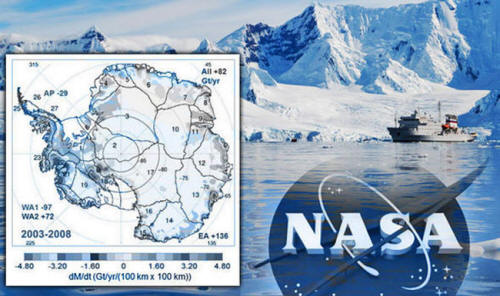
The amount of
ice at the Antarctic
is INCREASING not
going down, says NASA
A NEW NASA study of the
Antarctic from space
has thrown the case for climate
change into disarray
after finding that more NEW new
ice
has formed at the Antarctic
than has been lost to its
thinning glaciers.
The US space agency research (NASA)
claims an increase in Antarctic snow
accumulation that began 10,000 years ago is,
"currently adding enough
ice to the continent to outweigh the increased losses from melting
glaciers."
Global warming theories have been thrown into doubt after NASA also
claimed current horror predictions into future sea-level rises may
not be as severe.
Major studies previously made the case for global warming being a
man-made problem, including the the Intergovernmental Panel on
Climate Change's (IPCC) 2013 report, which said that Antarctica was
overall losing land ice.
But a NASA spokesman said:
"According to the new analysis of
satellite data, the Antarctic ice sheet showed a net gain of 112
billion tons of ice a year from 1992 to 2001.
"That net gain slowed to 82 billion tons of ice per year between
2003 and 2008."
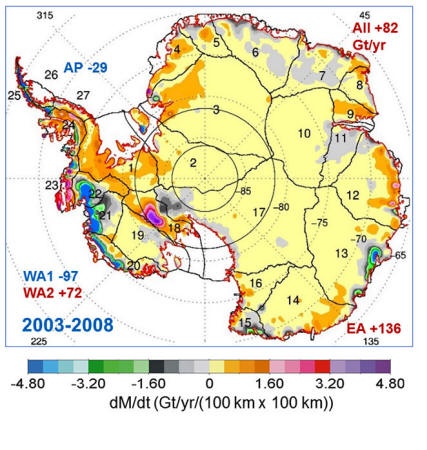
NASA map showing the
areas
of ice gain found in
the study
NASA agrees ice has been lost in the Antarctic Peninsula and the
Thwaites and Pine Island region of West Antarctica.
But says the gains elsewhere, which total 200billion tonnes a year,
outweigh all these losses of 65billion tonnes a year - leaving a net
annual Antarctic ice gain of 135 billion tonnes.
Jay Zwally, a glaciologist with NASA Goddard Space Flight
Center in Greenbelt, Maryland, and lead author of the study, which
was published in the Journal of Glaciology, said:
"Our main disagreement is for East
Antarctica and the interior of West Antarctica - there, we see
an ice gain that exceeds the losses in the other areas."
Mr Zwally added his team,
"measured small height changes over
large areas, as well as the large changes observed over smaller
areas."
Scientists calculate how much the ice
sheet is growing or shrinking from the changes in surface height
that are measured by the satellite altimeters.
In locations where the amount of new snowfall accumulating on an ice
sheet is not equal to the ice flow downward and outward to the
ocean, the surface height changes and the ice-sheet mass grows or
shrinks.
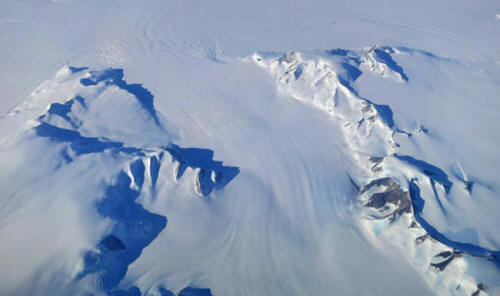
Antarctic ice gain
reduces sea levels
by 0.23mm a year,
says NASA
The study analyzed changes in the surface height of the Antarctic
ice sheet measured,
-
by radar altimeters on two European Space Agency
European Remote Sensing (ERS) satellites, spanning from 1992 to
2001
-
by the laser altimeter on NASA's Ice, Cloud, and land
Elevation Satellite (ICESat) from 2003 to 2008
It had been argued by the climate change lobby the gains in
elevation seen in East Antarctica were due to recent increases in
snow accumulation.
But the NASA team used meteorological
data beginning in 1979 to show the snowfall in East Antarctica
actually decreased by 11 billion tons per year during both the ERS
and ICESat periods.
They also used information on snow accumulation for tens of
thousands of years, derived by other scientists from ice cores, to
conclude that East Antarctica has been thickening for a very long
time.
The spokesman added:
"Extra snowfall that began 10,000
years ago has been slowly accumulating on the ice sheet and
compacting into solid ice over millennia, thickening the ice in
East Antarctica and the interior of West Antarctica by an
average of 0.7 inches (1.7 centimeters) per year.
"This small thickening, sustained over thousands of years and
spread over the vast expanse of these sectors of Antarctica,
corresponds to a very large gain of ice - enough to outweigh the
losses from fast-flowing glaciers in other parts of the
continent and reduce global sea level rise."
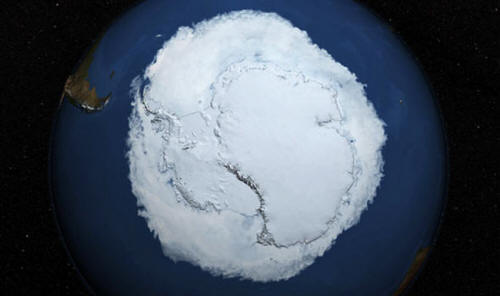
The Antarctic and its
huge area of ice
as seen from space
Mr Zwally said:
"At the end of the last Ice Age, the
air became warmer and carried more moisture across the
continent, doubling the amount of snow dropped on the ice sheet.
"The good news is that Antarctica is not currently contributing
to sea level rise, but is taking 0.23 millimeters per year
away."
Mr Zwally, however, did warn there is no
room for complacency.
He said it might only take a few decades for Antarctica's growth to
reverse.
He said:
"If the losses of the Antarctic
Peninsula and parts of West Antarctica continue to increase at
the same rate they've been increasing for the last two decades,
the losses will catch up with the long-term gain in East
Antarctica in 20 or 30 years.
"I don't think there will be enough snowfall increase to offset
these losses."
And Ben Smith, a glaciologist
with the University of Washington in Seattle not involved in the
research, said:
"The new study highlights the
difficulties of measuring the small changes in ice height
happening in East Antarctica.
"Doing altimetry accurately for very
large areas is extraordinarily difficult, and there are
measurements of snow accumulation that need to be done
independently to understand what's happening in these places."
Global Cooling
- Decade Long Ice Age
Predicted as Sun 'Hibernates' -
by Jon Austin
November 05, 2015
from
Express Website
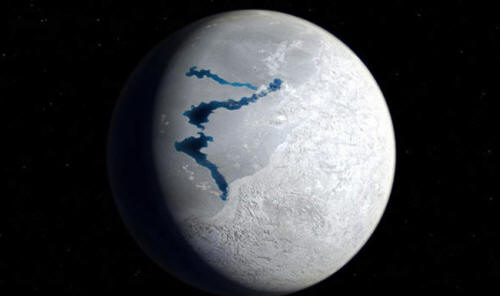
The big freeze
could last a decade
as sun goes to sleep
SCIENTISTS claim we are in
for a decade-long freeze as the
sun
slows down solar activity
by up to 60 per cent.
A team of European researchers have unveiled a scientific model
showing that the Earth is likely to experience a "mini ice age" from
2030 to 2040 as a result of decreased solar activity.
Their findings will infuriate environmental campaigners who argue by
2030 we could be facing increased sea levels and flooding due to
glacial melt at the poles.
However, at the National Astronomy Meeting in Wales, Northumbria
University professor Valentina Zharkova said fluctuations an
11-year cycle of solar activity the sun goes through would be
responsible for a freeze, the like of which has not been experienced
since the 1600s.
From 1645 to 1715 global temperatures dropped due to low solar
activity so much that the planet experienced a 70-year ice age known
as Maunder Minimum which saw the River Thames in London completely
frozen.
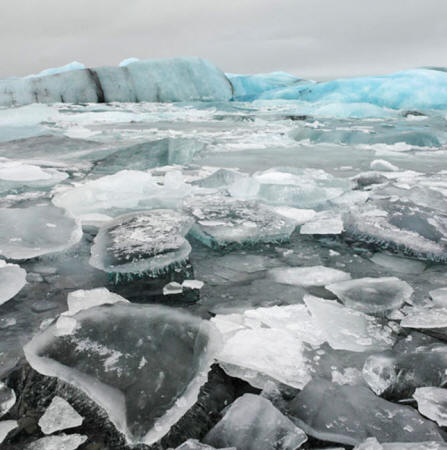
The researchers have now developed a
"double dynamo "model that can better predict when the next freeze
will be.
Based on current cycles, they predict solar activity dwindling for
ten years from 2030.
Professor Zharkova said two magnetic waves will cancel each other
out in about 2030, leading to a drop in sun spots and solar flares
of about 60 per cent.
Sunspots are dark concentrations of magnetic field flux on the
surface that reduce surface temperature in that area, while solar
flares are burst of radiation and solar energy that fire out across
the solar system, but the Earth's atmosphere protects us from the
otherwise devastating effects.
She said:
"In cycle 26, the two waves exactly
mirror each other, peaking at the same time but in opposite
hemispheres of the Sun.
"We predict that this will lead to the properties of a ‘Maunder
minimum.
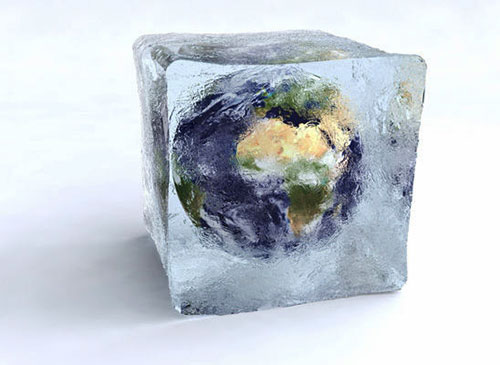
The theory is likely to infuriate environmentalists
who fear the
globe is heating up
"Over the cycle, the waves fluctuate
between the Sun's northern and southern hemispheres. Combining
both waves together and comparing to real data for the current
solar cycle, we found that our predictions showed an accuracy of
97 per cent."
Research colleagues Simon Shepherd of
Bradford University, Helen Popova of Lomonosov Moscow State
University and Sergei Zarkhov of the University of Hull used
magnetic field observations from 1976 to 2008 at the Wilcox Solar
Observatory at Stanford University.
A Royal Astronomical Society spokesman said:
"It is 172 years since a scientist
first spotted that the Sun's activity varies over a cycle
lasting around 10 to 12 years.
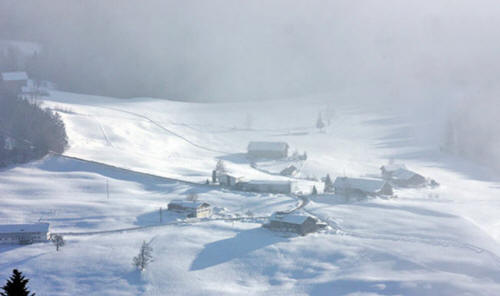
Could you handle ten years of winter?
"But every cycle is a little
different and none of the models of causes to date have fully
explained fluctuations."
The "double dynamo" theory appears to
support claims of researchers who argue Earth will soon experience
major global cooling due to lower solar activity as the sun goes
into a sustained period of hibernation.
Environmentalists meanwhile claim global temperatures will increase
over the period unless we drastically reduce carbon emissions.
Global Warming 'is
FAKE'
- Volume of Ice Caps is
INCREASING, Claims Top Geologist -
by Jon Austin
October 07, 2015
from
Express Website
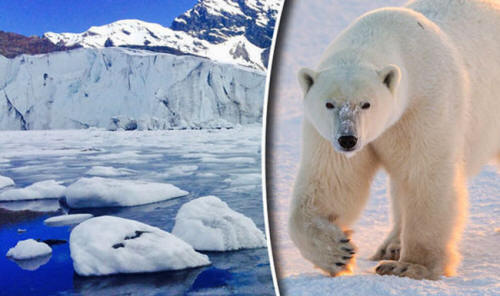
A geologist has made
claims
that goes against the
typical global warming thinking
THE WORLD is not heating up,
some areas are actually getting
colder
and the volume of polar ice
caps
is INCREASING in some places,
a leading geologist has
claimed.
James Kamis suggests "conflicting temperature trends" between
oceans and the Earth's atmosphere could dispel the "myth" of
man-made global warming.
Put simply, he says our atmospheric temperature has remained static
for more than 18 years, the Atlantic has got colder, and it is only
the Pacific Ocean where things have heated up.
Mr Kamis said:
"Scientists from the National
Oceanic and Atmospheric Administration (NOAA), the
National Aeronautics and Space Administration (NASA), and
many universities are at a loss to explain recent conflicting
temperature trends from Earth's oceans and atmosphere."
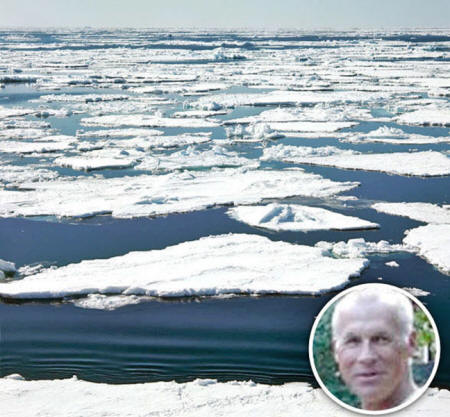
Ice floes on
Antarctic waters where James Kamis (inset)
claims the ice caps
increased
"It can be boiled down to this:
temperatures of the Earth's three big fluid systems are each
trending in different directions:
-
the temperature of the
Pacific Ocean is rising
-
the temperature of the
atmosphere has remained constant
-
the temperature of the
Atlantic Ocean is cooling"
He said the temperature variances do not
fit previous climate model predictions.
He added:
"Climate scientists favoring the
theory of man-made global warming are flooding the media with
new, and this time supposedly very reliable, explanations that
are generated from their latest super-computer climate models."
Opposing scientists claim global warming has melted the Greenland
ice cap at an alarming rate to the point that freshly melted ice
flowing into the Atlantic is lowering the seawater temperature
there.
However, Mr Kamis said that with no significant atmospheric
temperature change in 18.7 years, global warming is not likely to be
the cause of the melting.
Mr Kamis is a former employee of BTA Oil Producers, based in
Midland, Texas, a private firm which has been active in oil and
natural gas exploration, development and production for 50 years.
He has also been a long-standing member
of the American Association of Petroleum Geologists, so his
impartiality on the subject of whether man's use of fossil fuels has
led to global warming is open to question.
But he claims the facts speak for themselves.
He added:
"The entire Atlantic Ocean is
cooling, and not just in the northern portion of the Atlantic
that is adjacent to Greenland.
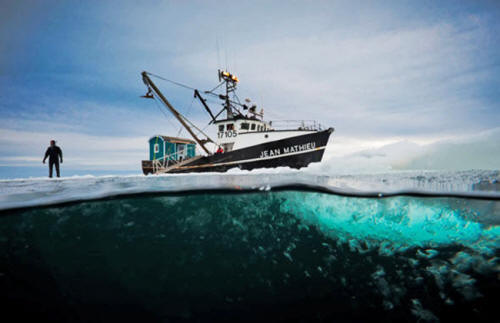
It is not in
dispute that
the North
Atlantic waters are getting colder
"This strongly suggests that outflow
of summertime Greenland ice cap melt water into the northern
portion of the Atlantic Ocean is not the primary driving force
behind cooling the entire Atlantic Ocean.
"Recent research from NASA's
Operation Ice Bridge clearly shows that Greenland's ice mass
loss is only occurring in areas immediately adjacent to the
ocean.
"This perimeter-based ice loss is greatest in areas where the
ice cap overlays known deep geological fault zones that are
emitting geothermal heat onto the base of the ice cap.
"The interior portions of the Greenland Ice Cap are in ice mass
balance. The extent of Arctic Ocean sea ice has increased the
last three years, and not decreased as predicted.
"The Antarctic Ice Cap extent has increased steadily for thirty
five years, and not decreased as predicted."

But the Pacific Ocean
is getting warmer
He believes melting of the Greenland Ice cap to be caused by heat
from ancient volcanic eruptions and geothermal heat flow from below
the surface.
He told
Climate Change Dispatch:
"Many noted and well-intentioned
climate scientists and universities are now starting to publicly
admit that overwhelming amounts of new research indicates that
the theory of man-made global warming does not properly explain
many observed climate trends.
Reason dictates that a more balanced
approach to studying climate trends is needed."
But other experts disagreed.
Michael Mann, a climate scientist
of Pennsylvania State University, said:
"We may see warming even faster than
what the models are predicting."
And Michael England, a professor
at the University of New South Wales in Australia, said global
temperature has steadily climbed by 1.4 F since 1880.
He said:
"Global temperatures may rise
another 4 to 7 F (2 to 4 C) by 2100."
|













